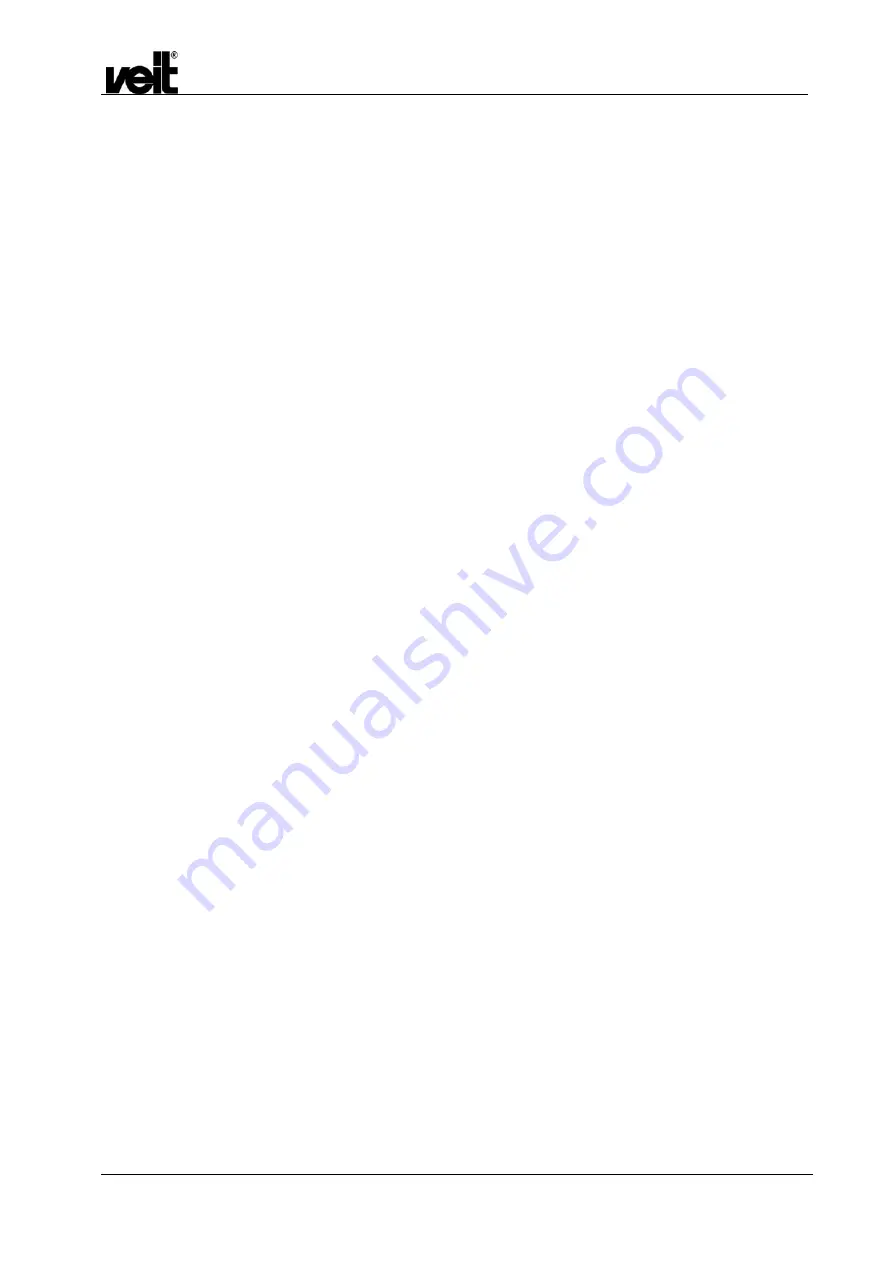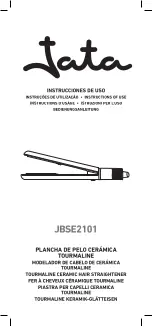
Dampfstation VEIT 2380 12 kW / 26 kW / 39 kW / 52 kW
VEIT 2380 Steam Station 12 kW / 26 kW / 39 kW / 52 kW
31.01.2007
9
1.6.1 Betrieb
/
Operating
Hauptschalter einschalten.
Über den Wahlschalter die gewünschte Leistung einschalten.
Die Pumpe befüllt den Kessel. Sollte die Pumpe bei der
Inbetriebnahme kein Wasser fördern, muss sie entlüftet werden.
(Vierkantschraube neben dem Eingangsstutzen öffnen bis
Wasser kommt).
Bei Erreichung des NW werden die Heizungen eingeschaltet.
Der Dampfdruck wird am Manometer angezeigt. Wenn der
Betriebsdruck erreicht ist wird der Dampfhahn langsam geöffnet.
Der weitere Betrieb funktioniert automatisch.
Bei Betriebsende wird der Hauptschalter ausgeschaltet, der
Dampfhahn geschlossen und der Kessel abgeschlämmt. Zur
Abschlämmung wird der 3/4" Abschlämmhahn geöffnet; das
gesamte Kesselwasser mit den Kalkresten wird weggespült.
Wenn das Manometer keinen Druck mehr anzeigt, wird der
Abschlämmhahn geschlossen und der Kessel neu befüllt.
Danach wieder ausschalten und Wasserversorgung schließen.
Switch on the main switch.
Set the required power with the selection switch.
The pump fills the boiler. If the pump does not supply any water
when started, venting is necessary. (Open the square-head bolt
beside the inlet plinth until water comes.)
When the minimum water level is reached, the heating elements
are switched on. The steam pressure is indicated by the
pressure gauge. When the working pressure is reached, the
steam valve is opened slowly.
The next operating steps are automatic.
When the operation is finished, the main switch is switched off,
the steam valve is closed and the boiler is drained. For drainage
the 3/4" drainage valve is opened; all the boiler water with the
scale rests is removed.
When the manometer indicates no pressure, the drainage valve
is closed and the boiler is refilled. Switch off again and close the
water supply.
1.7 Prüf- und Wartungsarbeiten / Inspection and Maintenance Work
Täglich:
•
Die Funktion des Manometers und Druckreglers überprüfen.
•
Die Dichtheit aller Kugelhähne überprüfen.
•
Kessel abschlämmen.
Daily:
•
Inspect the function of the manometer and the pressure
regulator.
•
Check all ball valves for leakage.
•
Drain the boiler.
Wöchentlich:
•
Speisewasserbehälter ablassen und anschließend mit
frischem Wasser befüllen.
•
Schmutzfänger in der Pumpenzulaufleitung sowie ggf.
Feinfilter vor der Enthärtungsanlage reinigen.
•
1-2 mal jährlich muss die Funktion des Sicherheitsventils
durch Anlüften geprüft werden.
Weekly:
•
Empty the feed water tank and fill with fresh water.
•
Clean the dirt trap of the suction pipe of the pump and, if
necessary, clean the fine filter in front of the water-softening
unit.
•
Once or twice a year, the function of the safety valve must
be tested by venting.
Jährlich:
•
Alle Anschlüsse (Elektro, Frischwasser, Überläufe,
Kondensat, Dampf) auf Dichtheit, Korrosion und Festigkeit
kontrollieren. Alle Kabelklemmen am Hauptschalter an den
Sicherungen und Heizungsschützen nachziehen.
•
Zur Wartung des Kessels Flanschdeckel abnehmen. Das
Innere des Kessels, die Elektroden und die Heizungen von
Schmutz und Kalkablagerungen reinigen.
•
Das Schutzrohr der Elektrode auf Kalkablagerungen
kontrollieren, gegebenenfalls reinigen. Dazu in den Kessel
leuchten und durch die Öffnung für die Elektrode den
Zustand des Schutzrohrs prüfen.
•
Befüll- und Abschlämmstutzen auf Kalkreste kontrollieren
und ggf. reinigen.
•
Bei der Montage des Flanschdeckels muss eine neue
Dichtung verwendet werden.
•
Alle Funktionsteile (Manometer, Druckregler,
Sicherheitsventil, Wasserventil, Rückschlagventil, etc.) auf
eine einwandfreie Funktion prüfen.
Yearly:
•
Check all the connections (electrical, fresh water, overflows,
condensate, steam) for leakage, corrosion and tightness.
Tighten all cable clamps at the main switch, fuses and
heating contactors.
•
Remove the flange lid for maintaining the boiler. Remove dirt
and scale deposits from the inside of the boiler, the
electrodes and the heating elements.
•
Check the protecting tube of the electrode for furring, if
necessary clean. To do so, shine with a lamp into the boiler
and check through the opening of the electrodes the
condition of the protecting tube.
•
Inspect the filling and the drainage plinths for scale deposits
and clean, if necessary.
•
A new seal must be used, when the flange lid is mounted.
•
Check that all the function parts (manometer, pressure
regulator, safety valve, water valve, check valve, and so on)
work properly.










































